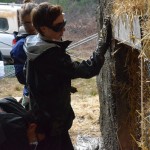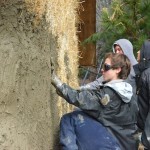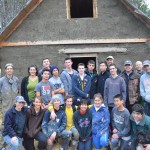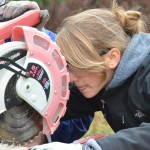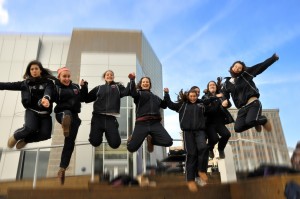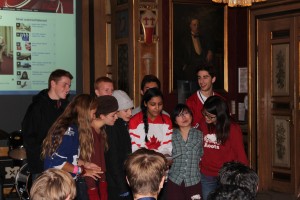 Every year, we commemorate the Canadian veterans, but each year that passes is also one less year that these heroes will be around to tell their stories. That is why I knew my trip to Ottawa was going to be special and so important. Remembrance Day has always been for me about the moment of silence, but today it was not about silence, but about sounds. Today I heard the sounds of war, and the sounds of freedom, but most importantly, I had the incredible opportunity to listen to the veterans telling their stories.
Every year, we commemorate the Canadian veterans, but each year that passes is also one less year that these heroes will be around to tell their stories. That is why I knew my trip to Ottawa was going to be special and so important. Remembrance Day has always been for me about the moment of silence, but today it was not about silence, but about sounds. Today I heard the sounds of war, and the sounds of freedom, but most importantly, I had the incredible opportunity to listen to the veterans telling their stories.
The sounds of war all began with the first firing of the cannon shot and the 21 shots that followed. It thundered through the air, jolting everyone to awareness. The shots were unexpected and a little terrifying, and I just had to grin and bear them. So what must it have been like to be on the battlefield to hear shots like these, a noise that was not only deafening, but also a threat to life? We cannot imagine and we mustn’t even try. We can only cherish our free country and be thankful for the veterans who gave it to us.
They say one needs to be in good shape to be in war, and the Canadian War Museum provided a station with some fitness tests to determine whether you, the visitor, would be eligible for the army. Your feet must be flawless, and your vision, optimal. You have to be a certain height, and even your teeth are subject to an examination. Basically, you had to be perfect, but even perfect wasn’t enough. In fact, soldiers never measured up to the standards set by the sergeants who would yell at them and punish them, as I learned first hand from a soldier who trained for the potential outbreak of the Cold War. His main message? Grin and bear it, just like the case of the cannons. And our veterans did just this, becoming the definition of resilience.
During the moment of silence at the Remembrance Day ceremony, I felt a sense of peace I had never quite experienced. Differences in religion, beliefs and cultures melted away, as even the buses stopped to pay their respects. But, being outside in the wind, rather than listening to silence, I listened to the flapping of the Manitoba flag I had been given to hold, which rippled along with the flags representing all the Canadian provinces. For that moment, all people, from all provinces were united as proud Canadians, just as the soldiers would have been united while fighting overseas, despite their differences or reasons of enrollment, their only option being to struggle together to survive.
November 11th is not really about remembering, but about listening. And the part of this trip that I will remember the most was shaking hands with the veterans and listening to their stories. It’s astounding to think that the very hand that I shook once shot bullet after bullet, drove aircrafts into enemies, or steered a massive naval ship. I know I would be terribly traumatized by such an experience, but these men and women were so polished and humble that had I not been aware of all their medals hanging from their navy blazers, I would never have guessed that they had participated in World War II. Their tales are even more bewildering. One told me about a shell that landed right next to him and blew out his ear. Another was scorched by a gasoline leak. The pictures on the wall of the war Museum brought WWI stories to life as well: One that stood out in particular was a soldier that carried a teddy bear with him everywhere as a good luck gift made by his daughter – only later to be killed in battle. A letter not yet mailed that his son had written was also on display. It is heartbreaking to realize how such humane people lived in such an inhumane environment, drinking rum for breakfast and dog biscuits for dinner. Yet they still had hope, I realized, as one woman, who was a military vehicle driver, showed me pictures from her Halloween party in a tiny hut during WWII.
While I always make sure to wear the poppy every Remembrance Day, the poppy took special meaning this year, when I placed it on the tomb of the Unknown Soldier in Ottawa. The veterans, known, and unknown, will forever be an inspiration to me, for truly having principles, not just saying that they do, because when one truly has values, they will sacrifice every last bit to adhere to them. I admire them for their unmatchable courage, because in the past and on this day, I’ve learned about war, studied war, and saw pictures of war. But I still don’t know what war is. And even in my wildest dreams, I know I never will. –Josephine White ’14

